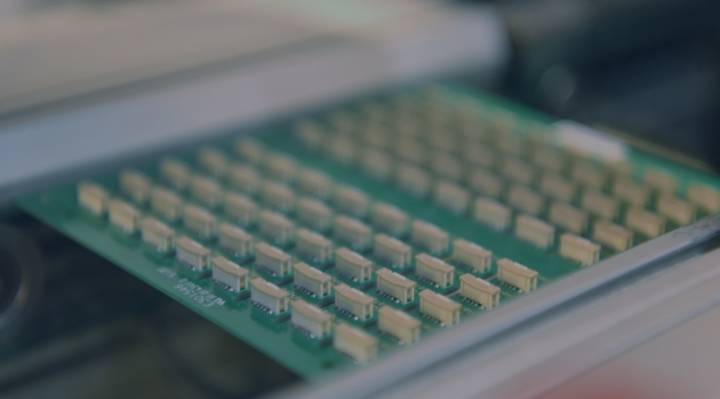The informed selection of an EMS provider is a multi-stage endeavour - from early research into the contract electronics manufacturing market, through the various stages of enquiry and discussion, to quotation and final contract signing. Before placing a request for quotation, it is important to check whether companies match in terms of business, size, culture and organisation. In this way, it is possible to determine with high probability whether cooperation with a given counterparty has potential. Such a holistic approach to entering into joint commitments saves time for both parties involved.
A request for quotation involving production takes some time, so it is worth collecting sufficiently extensive information beforehand to focus on obtaining quotes from a selected group of customers. The RFQ (request for quotation) document itself, which we send to check the production price, should be as thoughtful as the selection of its recipients. Thanks to this, the subsequent contract manufacture of electronics should proceed without major disruptions.
What is an RFQ?
A request for quotation (RFQ) is a very precise document prepared by the customer. The RFQ contains detailed specifications, quantity requirements as well as other necessary formal or business conditions.
A buyer using a request for quotation is not looking for creativity. He expects the supplier to price a specific service, such as contract electronics manufacturing, or products based on the conditions listed on a sheet.
But before you submit an RFQ...
...get to know your potential electronics manufacturing provider better. What can you do to verify suppliers as widely as possible?
Do not start by sending a request for quotation. Make sure you sign a non-disclosure agreement (NDA) with the potential supplier before you send any details. Although most companies recognise the importance of commercial confidentiality, signing an NDA increases your confidence that any information you provide will be kept confidential and will only be handled as indicated.
From the RFX documents, it would be wise to send a request for information (RFI) to the supplier. The RFI is a set of questions about the supplier, its manufacture, quality, certifications, and other process or management information. Knowing this information about the supplier and how their contract manufacturing operations are run will make it easier to move forward and determine whether the supplier is a potential fit.
What other actions are worth taking?
- conduct an audit, preferably at the supplier’s site, to see how the processes and direct contract electronics manufacturing work;
- carry out a fit assessment – check whether the companies match in terms of size, culture and work organisation;
- carry out a competence assessment of the company in question, to see if they fit our needs as a customer;
- check financial aspects such as:
- company turnover,
- business size of the project – competitiveness of our prices for the customer.
What does a well drafted RFQ contain?
In a nutshell? Specifics. We know what to look for, what questions to ask selected companies that meet our requirements.
1. Detailed product description
Describing your product as accurately as possible, essentially what it is supposed to consist of and what contract electronics manufacturing is supposed to be characterised by, through documents is the first step to start preparing the RFQ document package. What should comprise the documentation package?
- Project concept – product specifications and features should be defined and prepared in sufficient detail. The concept should consist of a text part, describing the problem our product is to solve, and a visual part, describing e.g. product design and colours, examples describing use cases and scenarios of product use.
- Project specification – provides knowledge about the dimensions and shape of the industrial project, as well as how to assemble the product. Therefore, all the necessary projections with descriptions should be presented in the following files.
- BOM – bill of materials; list of all components.
- Gerbers – presentation of the position of all components on the printed circuit board and indication of how each trace connects to particular components, in different layers of the PCB.
- Laminate specification – submitted PCB design should also contain information on parameters of laminate to be used. Properly selected laminate type should be consistent with the intended use of the finished device.
- Centroid file (also known as ‘Pick and Place’ or ‘XY Coordinate’ file) – contains information about placement of individual components on PCB layout, at least xy position, rotation, layer, reference mark and value (package).
- Packaging requirements – sensitive materials, e.g. to moisture or electrostatic discharges, used in the PCB assembly process require protective conditions also outside the production hall, therefore the contractor should also be informed about the packaging requirements.
- Assembly drawings – if, in addition to assembling the PCBA, you want a comprehensive service that includes final assembly. Pay particular attention to whether there are characteristic processes in the assembly process - if so, indicate which ones.
- Individual quality criteria - depending on the end use of the product, also indicate the relevant IPC class. Especially for manufacturing in class 2 and 3, as they require higher standards.
- Visual inspection requirements – indicating the needs in this area both at individual stages of manufacture, e.g. by using AXI or SPI inspection systems, as well as during final assembly.
- Product testing - to ensure that the product meets expectations - works, it is necessary to clearly define testing requirements. Indicate whether the product is to undergo basic forms of verification during assembly or whether it will require dedicated solutions.
2. Information about the planned volume
Determining the volume of your assembly requirements will allow you to quantitatively compare the potential of your chosen electronics manufacturing providers in a measurable way. This practical information will allow you to avoid unnecessary downtime. Such a parameter may also be required by the electronics manufacturing provider in the quotation, so the RFQ documentation should also include projected data:
- number of product units per year,
- production series - monthly/yearly.
The economic calculation in this case should take place in a multi-faceted manner, covering such issues as the Minimum Order Quantity (MOQ), or Minimum Production Quantity (MPQ), which can vary for different products manufactured in a factory providing electronics manufacturing services. Production is also about the logistics of the finished goods, so in addition to the economic calculation of the product itself, a calculation must also be made for the Minimum Shipment Quantity (MSQ) agreed with the supplier.
It is therefore useful to clearly define the basis for pricing - for which quantities the EMS provider is to quote a price.
3. Target Price
If the request for quotation relates to a previously offered product - you are resuming its production or you simply want to outsource SMT assembly to another contractor, it is worth communicating this fact and the price to new potential contractors.
Thanks to this, the electronics manufacturing provider will be able to refer to the previous quotation - it will allow to learn about our expectations, and also, at least in some cases, it will allow to update the quotation to the current prices of materials and technologies on the market.
4. Determining the production schedule
Contract electronics manufacturing works best when we operate in accordance with a plan, which also includes a schedule giving timeframes for production that offers many advantages. It will allow, together with the supplier, to realistically establish the maintenance of production flow - from establishing the time when you would like to receive the first production batch to subsequent intervals of finished product delivery.
Currently, most problems in the electronics market are generated by the availability of materials, which hinders ‘spontaneous’ or ‘impulsive’ planning of contract electronics manufacturing. Currently, prices on the market change practically every day, so planning the SMT assembly in a specific period of time allows you to analyse current fluctuations in the cost of materials in a given period of time and choose the best offer.
It can take up to 4 weeks to prepare a comprehensive response to the issues contained in the RFQ, including the supplier’s quotation. This timeframe is not due to sluggishness on the part of the potential supplier - a good electronics manufacturing provider sends out queries to suppliers to get the best possible prices that will be competitive. If a potential EMS provider delivers quotes within a few days, it usually means that they have limited themselves in their estimate to prices tested on the open market, which are much less precise. It should be taken into account that the final setting of the price to market conditions in such a situation involves the risk that the product will not be competitive on the market.





